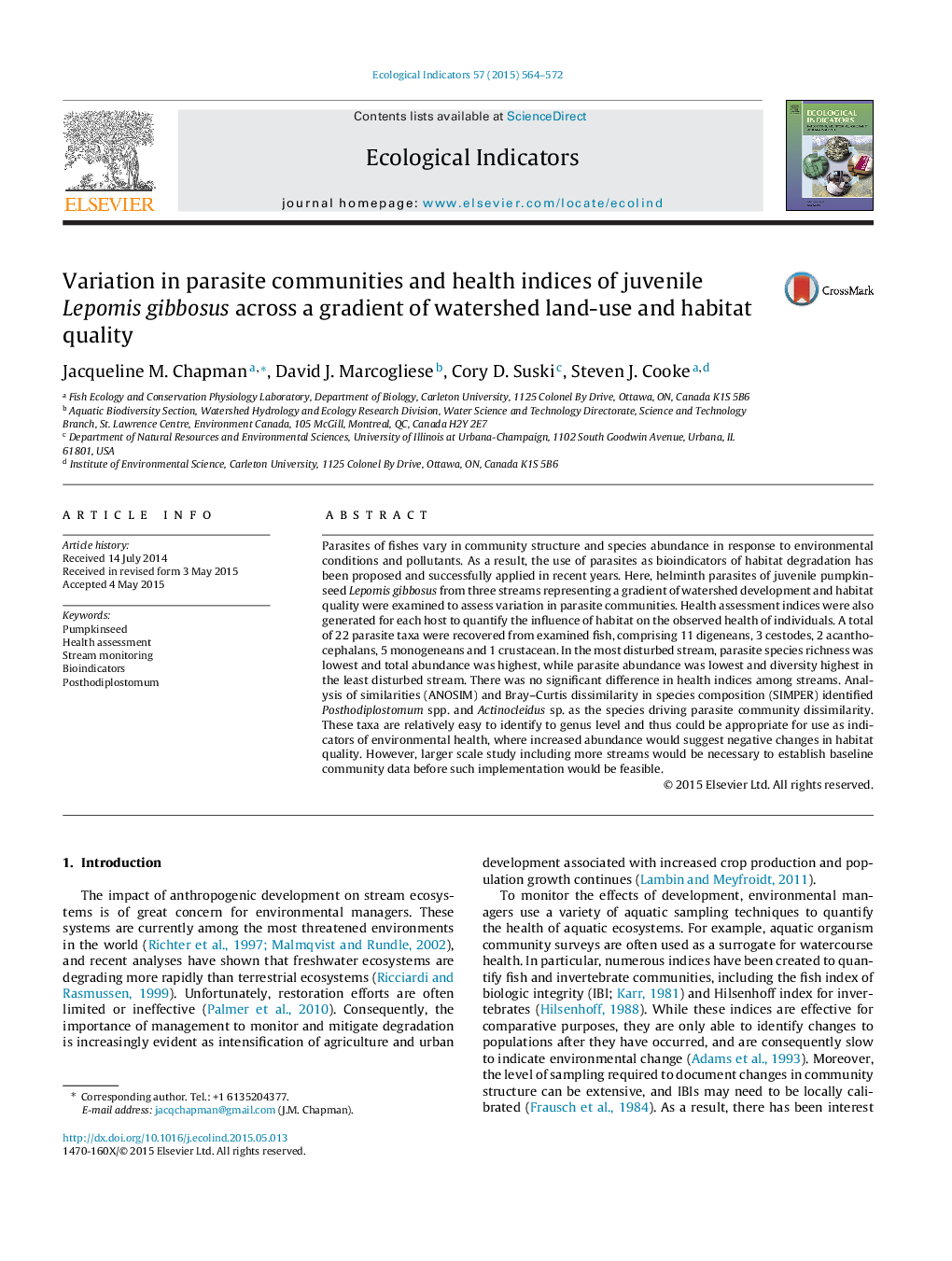| Article ID | Journal | Published Year | Pages | File Type |
|---|---|---|---|---|
| 6294744 | Ecological Indicators | 2015 | 9 Pages |
Abstract
Parasites of fishes vary in community structure and species abundance in response to environmental conditions and pollutants. As a result, the use of parasites as bioindicators of habitat degradation has been proposed and successfully applied in recent years. Here, helminth parasites of juvenile pumpkinseed Lepomis gibbosus from three streams representing a gradient of watershed development and habitat quality were examined to assess variation in parasite communities. Health assessment indices were also generated for each host to quantify the influence of habitat on the observed health of individuals. A total of 22 parasite taxa were recovered from examined fish, comprising 11 digeneans, 3 cestodes, 2 acanthocephalans, 5 monogeneans and 1 crustacean. In the most disturbed stream, parasite species richness was lowest and total abundance was highest, while parasite abundance was lowest and diversity highest in the least disturbed stream. There was no significant difference in health indices among streams. Analysis of similarities (ANOSIM) and Bray-Curtis dissimilarity in species composition (SIMPER) identified Posthodiplostomum spp. and Actinocleidus sp. as the species driving parasite community dissimilarity. These taxa are relatively easy to identify to genus level and thus could be appropriate for use as indicators of environmental health, where increased abundance would suggest negative changes in habitat quality. However, larger scale study including more streams would be necessary to establish baseline community data before such implementation would be feasible.
Keywords
Related Topics
Life Sciences
Agricultural and Biological Sciences
Ecology, Evolution, Behavior and Systematics
Authors
Jacqueline M. Chapman, David J. Marcogliese, Cory D. Suski, Steven J. Cooke,
